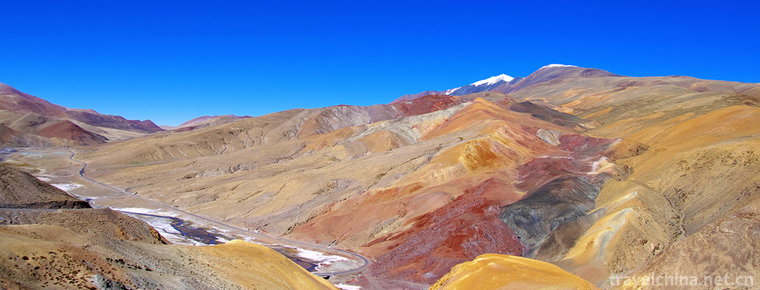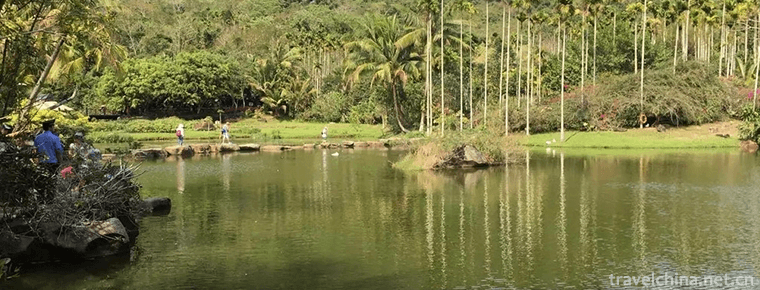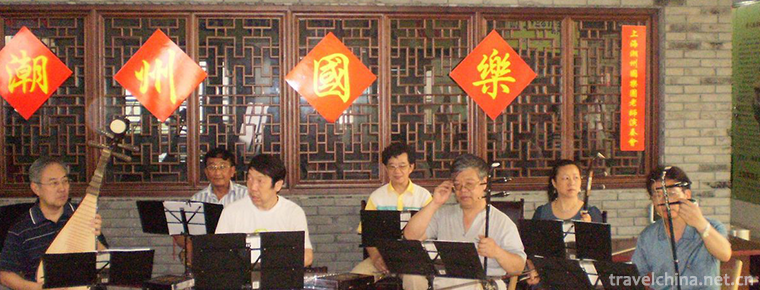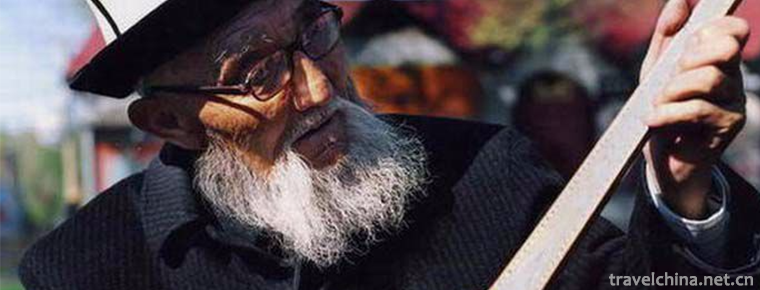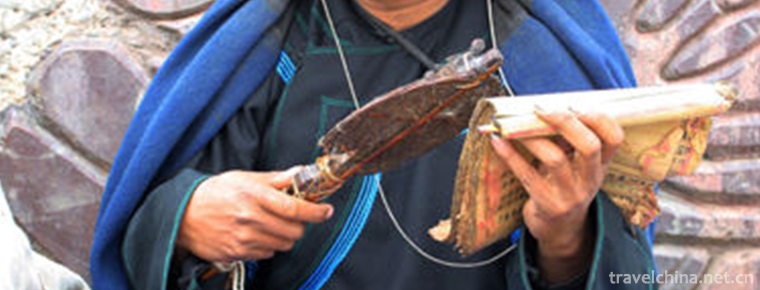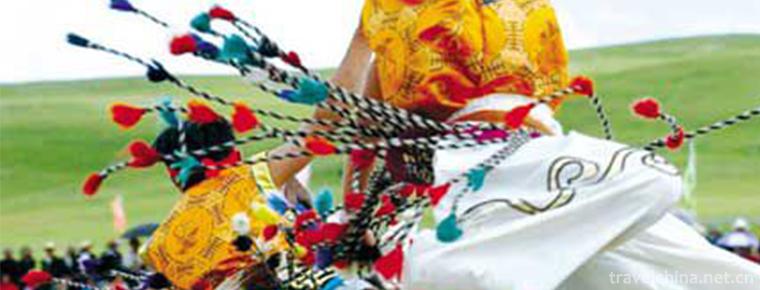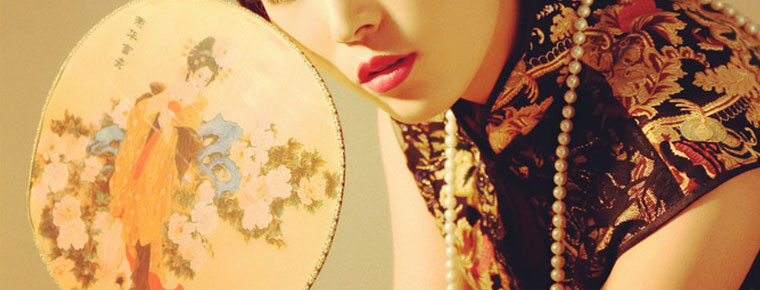Meili Snow Mountain
Meili Snow Mountain, located in the eastern part of Chayu County, Tibet, and the western part of Jingyunling Township, Deqin County, Diqing Tibetan Autonomous Prefecture, Yunnan Province, is a huge snowy mountain group with a total length of 150 kilometers. It is called Kawagbo Snow Mountain in Tibetan area, and the word "Meri" is translated into Chinese in Deqin Tibetan mainri, meaning Yaoshan, which is named for its rich variety of precious medicinal materials. At the same time, it is also a holy place of Yongzhong Ben religion, and Gangrenboqi in Tibet, Animaqing Mountain in Qinghai, and Gaduojuewa in Qinghai are also known as the four sacred mountains of Tibetan Buddhism.
The highest peak, Kawagbo, is 6740 meters above sea level. It is the highest peak in Yunnan Province. It is located 10 kilometers southwest of Deqin County and 184 kilometers away from Zhongdian County. It is about 30 kilometers long. The highest peak in pyramid shape is Kawagbo Peak, 6740 meters above sea level. It is the highest peak in Yunnan Province, which is a very high mountain protruding nearly kilometers above the top of surrounding mountains. The Meili Snow Mountain fault activity is intensely towering, with 13 peaks above 6000 meters above sea level surrounded by the Kawagbo peak, which is the highest mountain in the southeastern margin of the Qinghai-Tibet Plateau.
According to the Atlas of Yunnan Province published by China Map Publishing House (2006), Meili Snow Mountain in a narrow sense refers only to the Meili Snow Mountain section north of the middle-north section of Nushan Mountains in Hengduan Mountains (coordinates 98 30'-98 46', 28 10'-28 32') in the middle-north section of the Hengduan Mountains (coordinates 98 65 The thirteen peaks, headed by Kawagbo peak, belong to the range of Prince Snow Mountain. However, in many versions of the text, they are commonly called Meili Snow Mountain in a broad sense, and Kawagbo Peak is used as a landmark representing Meili Snow Mountain.
Meili Snow Mountain belongs to the Nushan Mountains on the Yunnan-Tibet border between the southeastern edge of the Qinghai-Tibet Plateau and the Lancang River and Nujiang River. It is connected with Tayantaen Mountain in Tibet in the north and the Biluoxue Mountain in Gongshan County, Nujiang Prefecture, Yunnan Province in the south. The first peak of Yunnan Province, Kawagbo Peak, with a maximum altitude of 6740 m, has a lowest altitude of Charitong on the edge of the Lancang River. 900m at the junction with Yan men Township, the relative height difference is 5840m.
Meili Xue Shan is a sacred mountain in the hearts of Tibetans. It is called "velvet zanwar" in Tibetan. The main peak said that La Zengmian Peak, the left (north) side of the mountain has Bu Qiongsong Jiwu Xue, and then north Zaduiwu Xue, known as the invincible demon-falling God of war; its right (south) is Pabanedingji, Bawu Bameng, Jiva Ren'an (Five Buddha Crown Peaks), then south is the beautiful goddess peak Myanzimu, Myanzimu is Kawag. The princess of Bo Feng, the goddess of the sea, the niece of the king of medicine, is also known as the daughter of Jade Dragon Snow Mountain in Lijiang. The Tibetan region calls the Kawagbo peak "Rongzan Kawagbo". Rongzan refers to the valley zone; Zan: belongs to a very powerful god; Kawagbo: a white snow mountain; the whole meaning is: the white snow mountain of the Holy Spirit.
Meili Snow Mountain is a multi-religious and multi-sectarian Tibetan area, with Tibetan Buddhism as the main body, coexisting with Catholicism, Christianity and Islam, and multi-religion coexisting and prospering. Tibetan Buddhism includes Sakya, Ningma, Kagyu and Gelu, among which Gelu and Ningma have the greatest influence. The most influential historical events in Tibetan Buddhism in this area are:
Karma Bach, King Dabao II, founder of the reincarnation system of Tibetan Buddhism Living Buddha, made a pilgrimage to Kawagbo in 1268, and determined the route of transferring the size of Meili Snow Mountain.
Karma Jean dome DOI Ji, king of Dabao III, pilgrimage to kwabbo, 1326.
The 10th Panchen Master of Tibetan Buddhism, Zheng Jijianzan, held a solemn magic ceremony in front of Kawagbo Peak in October 1989. Today, the monument has been carved and left a monument for visitors to see.
The 11th Panchen master of Tibetan Buddhism, Quijijijieb, held a solemn pilgrimage ceremony in front of Kawagbo in Feilai Temple on May 24, 2006.
There are 14 temples in the area. Before the democratic reform, there were 24 Living Buddhas and 8 Living Buddhas. The following is the distribution of temples in the Meili area.
Dongzhulin Temple: Founded in 1667, it is situated in Benzilan Township, Deqin County, beside 214 National Highway. There are 636 monks on the roster. There are five-storey halls, a Bianjing Academy, a Fa Xiang Academy and 104 monasteries. It belongs to the Godan Deqinlin Temple of the Yellow Sect of the Gelu Sect. It is located in Deqin Shengping Town. It was founded in 31 years of Guangxu in Qing Dynasty and was named by the 5th Dalai Lama. It belongs to the yellow school of the Georgia School.
Bajinglin Temple, also known as Hongpo Temple, is located in Hongpo Village, Yunling Township, Deqin County. It was founded in 1514 A.D. and belongs to the Yellow Religion of the Gelug School. There is a plaque "Huaxing Nangang" given by Emperor Xianfeng of Qing Dynasty.
Tabalin Temple: The only Tibetan Buddhist nun temple in Yunnan, located in Shusong Town, Benzilan Township, Deqin, was founded in 1772 A.D. and now has 115 nuns.
Yongzhuding Temple: Located in Chini Natural Village, Yanmen Township, Deqin, it was founded in Yongle Period of Ming Dynasty. There are 80 monks, belonging to Ningma Red Religion.
Banggong Temple: Located in Shidi Village, Yanmen Township, Deqin, it was founded in 1637. There are 50 monks, belonging to Ningma Red Religion.
Dragging bamboo Temple: it is located at the dragoon village of Yan gate Township, Deqin. There are 30 monks, belonging to the red school of the Ning Ma group.
Yuxian Temple: Located in Yalong Village, Benzilan Township, Deqin County, it was founded in 1618. There are 33 monks, belonging to the Dalong Gaju School.
Yugong Zaxi Qupilin Temple: Located in Deqinnitong Village, it was founded in Wanli period of Ming Dynasty and belongs to the Karma Kagyu School.
Aiming at the problem of glacier degradation in Meili Snow Mountain, Yunnan Province, scientists believe that the main reason is global warming. Although there are some ways to slow down the degradation rate, it can not be completely curbed.
Located in Diqing Tibetan Autonomous Prefecture of Yunnan Province (Hailuogou is Sichuan), the glacier is the lowest elevation glacier in the low latitude area on the earth, and also a tourist attraction in Yunnan. At the beginning of the twenty-first century, the Meili Snow Mountains experienced a decrease in glacier area and a rise in snow line, and the largest glacier in Mingyong retreated significantly.
Glacier degradation is a problem facing the whole world, including the melting of polar glaciers. It is very difficult to curb this trend fundamentally.
Local governments can improve the air humidity around snow mountains by building reservoirs, increasing surface water and vegetation coverage in ponds, and limiting excessive human activities to reduce damage, so as to alleviate the speed of snow and glacier melting to a certain extent.
Mountaineering records
In 1902, the British mountaineering team failed to reach the summit of merry main.
In 1987 8-9, the upper mountain Yue Hui in Japan was abandoned due to successive avalanches. Climbing route: Ming Yong glacier route; climbing height: 5100m.
In 1988, the United States clenqi mountaineering team, climbing route: Ming Yong glacier route, climbing height: 4350m
September-November 1989, Sino-Japanese joint reconnaissance team of Meili Snow Mountain, climbing route: direction of avalanche, climbing height: 5500 meters
From November 1990 to January 1991, the Sino-Japanese Meili Snow Mountains Joint Mountaineering Team (the second climb) snowed heavily in Meili Snow Mountains from January 1 to 3, 1991. Six Chinese members and 11 Japanese members were on standby at the 5100-meter camp. At 22:30 in the evening of January 3rd, C3 camp and the camp last call. In the morning of January 4th, 17 players were missing.
Climbing route: rain and collapse direction, climbing height: 6470 meters (December 28, 1990)
From January 6 to 20, 1991, the Meili Snow Mountain Search Team, the Chinese Mountaineering Association, four people arrived at the base camp on January 9, the Tibetan Mountaineering Association, six people arrived at the base camp on January 16, and the Japanese rescue team arrived at the base camp on January 20 because of the deep snow and frequent avalanches. On January 21, the search was terminated and the camp was withdrawn. The climbing height was 5300 meters C2.
From April 15 to June 6, 1991, the Sino-Japanese Meri Snow Mountain Joint Search Team (12 Japanese and 5 Chinese) was forced to stop the search because of continuous snowfall and frequent avalanches.
Climbing route: rain and collapse direction, climbing height: 4500 meters.
From October to December 1996, the Sino-Japanese Meili Snow Mountains Joint Mountaineering Team (the third climb). On December 2, the Japanese forecast that there will be a heavy snowfall in Meili Snow Mountains from April to 6 was also confirmed by the Central Meteorological Observatory and the Yunnan Meteorological Observatory. In order to avoid the recurrence of the tragedy of 91 years, the team was forced to withdraw and the camp was withdrawn on December 8. Climbing route: rain and collapse direction, climbing height: 5300 meters.
From December 2010 to January 2011, Gao Jiahu, a mountain climber in Yunnan Province, climbed Meili Snow Mountain by himself. Because he climbed the mountain too fast to adapt to the height, he had symptoms such as vomiting yellow water, bubbling in his lungs, weakness and headache. Since then, he has no connection.
Climbing route: the direction of the tile dragon in Tibet, the height of climbing: 5400 meters.
Up to now, there have been 10 climbing Meili Xue Shan in the past 15 years. Among them: China and Japan jointly climbed four times, Japan alone climbed one time, the United States team climbed four times, and China alone climbed one time.
Expedition
The study and exploration of Meili Xue Shan originated in nineteenth Century and even earlier.
Cheney, Jen Jen, Hungarian, wrote a book in 1879. The book describes the geographical features of Meili Xue Shan in detail.
F Kingdom Ward, a British botanist, published in the British Geographic Journal in 1916 and 1925 after two detailed geological and botanical surveys of the Mingyong Glacier in 1911 and 1914. He described the Meili Snow Mountain and its glacier condition. He wrote: "It's cold sitting on a glacier in a single suit. The shore is full of flowers. "
O'Santo Dovsky, professor of Geography in St. Petersburg, former Soviet Union, led a camel team in 1920 to explore the entrance to the Kingdom of Shambara in Mt. Meri
Ms. Alexandra David Neel, a French Tibetologist, became a female pilgrim in disguise in 1923. After eight months, she traveled through the hinterland of Tibet on foot and wrote Adventures of a Parisian woman in Lhasa.
Nicolas Raleisi, 1924-1927, came here to explore, and his essays focus on his amazing experience of approaching the kingdom of Shambara.
Joseph Locke, American botanist, published an article on Mt. Merry Snow in National Geographic from 1922 to 1935.
James Hilton, an American-born British writer, published The Lost Horizon in 1933 and later moved to the screen through Hollywood, making Shangri-La and Merry Snow Mountain world-famous. (There is nothing about Mt. Meri in this book, but mainly about the story of the Karakoram Mountains, which do not belong to the Great Shangri-La.)












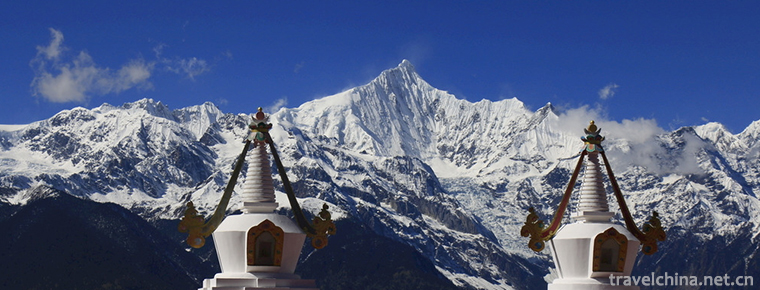
-
Dukezong Ancient City
The ancient city of dkkzong is the best preserved and largest Tibetan residence in China.
Views: 184 Time 2018-10-20 -
Three Gorges Dam
The Three Gorges Dam is located in Sandouping Town, Yichang City, Hubei Province, China. It is 38 kilometers from the Gezhouba .
Views: 146 Time 2018-11-11 -
Yanoda Tropical Rainforest Scenic Area
Yanuoda Tropical Rainforest Scenic Area is the only tropical rainforest located at 18 degrees north latitude in China. It is the concentration of five tropical rainforests in Hainan Island.
Views: 122 Time 2018-12-12 -
Chaozhou Music
Chaozhou music is the general name of all kinds of traditional folk instrumental music spread in Chaoshan area of Guangdong Province, referred to as Chaozhou music.
Views: 156 Time 2019-04-16 -
Manas
Manas, the traditional folk literature of Kirgiz Autonomous Prefecture in Kizlesu, Xinjiang, is one of the national intangible cultural heritage..
Views: 225 Time 2019-05-16 -
Wool Textile and Rolling Techniques
Flower felt is the most popular among all ethnic handicrafts in Xinjiang, and it has a long history. Felt caps from the 1st to 3rd centuries A.D. are among the cultural relics unearthed at Lop Nur Lou.
Views: 271 Time 2019-05-25 -
Reba Dance
Reba dance is a form of dance performed by Tibetan "Reba" artists. Reba is a group of street artists who make a living selling arts (usually composed of family as the basic unit) performing,.
Views: 175 Time 2019-06-11 -
Beijing University Of Technology
Founded in 1960, Beijing University of Technology is a multi-disciplinary municipal key university with a combination of engineering, science, economics, management, literature, law, art and education.
Views: 339 Time 2019-09-06 -
Tiantai Mountain in Qionglai
Tiantai Mountain Scenic Area in Qionglai is located in the southwest of Qionglai City, the hometown of Wenjun. It is the habitat of Sichuan Giant Panda. It is 110 km away from Chengdu City and 45 km away from Qionglai. .
Views: 193 Time 2020-11-05 -
Cheongsam and fan
As the saying goes, the pipa is half covered. What did ancient beauties use to cover their faces? The first reaction must be a fan! Fans are also the most common accessories in ancient times. Men use paper fans and women use round fans. Chinese traditional fan culture .
Views: 352 Time 2020-12-11 -
Leshan secondary industry
In 2019, the industrial added value of Leshan City is 68.028 billion yuan, an increase of 8.8% over the previous year, accounting for 36.5% of the city's GDP, driving economic growth by 4.0 percentage points and contributing 52.8% to economic growth..
Views: 361 Time 2020-12-17
